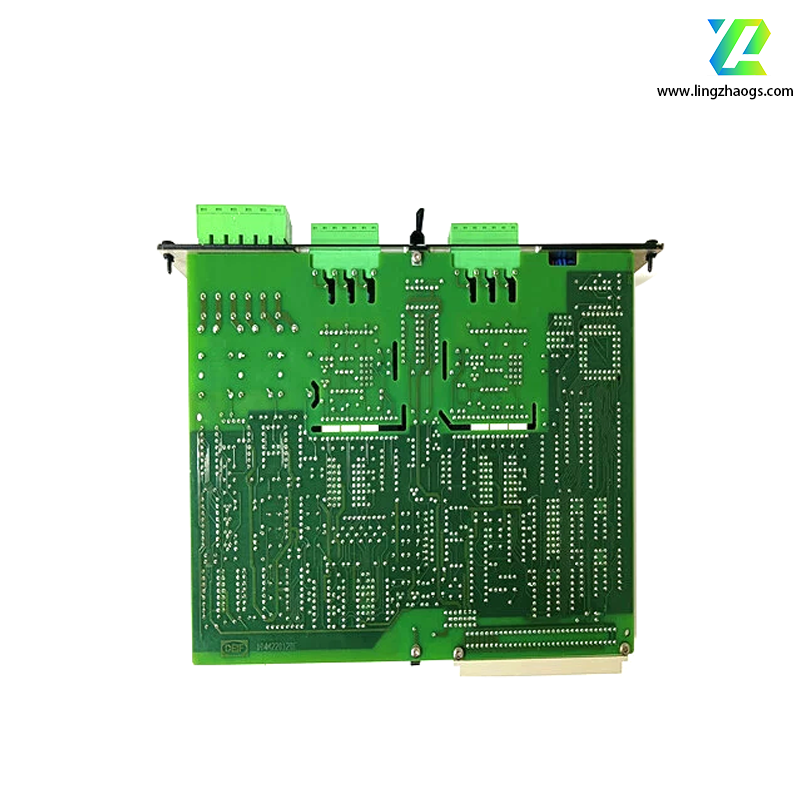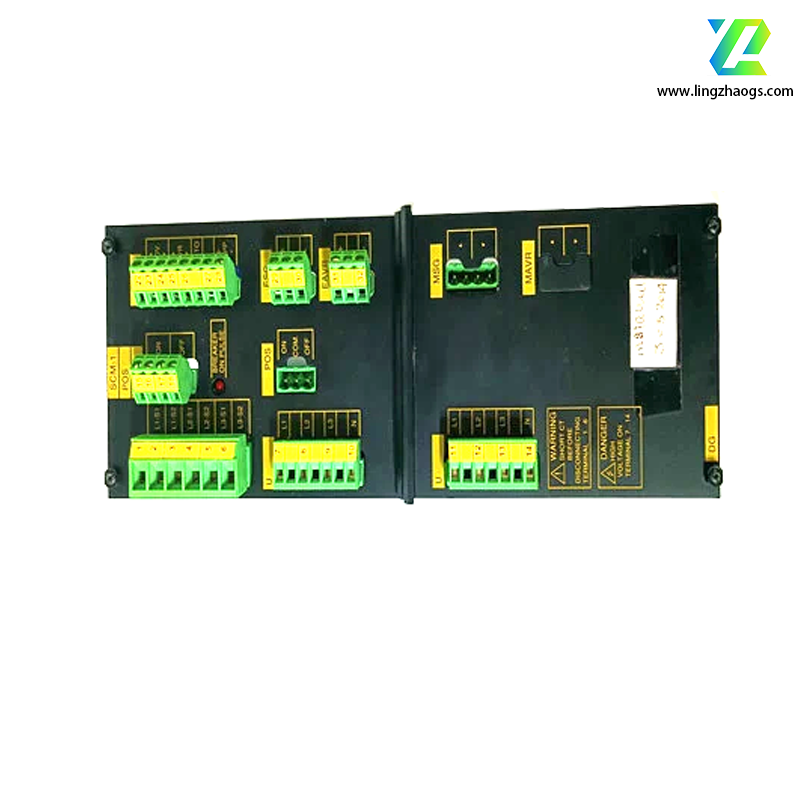Here’s a detailed overview of DEIF SCM-1 (DEIF A/S part number) based on industrial automation references, third-party distributor data, and DEIF’s product focus on power system control and synchronization. As a specialized synchronization module, this part aligns with DEIF’s offerings for genset and grid coordination in marine, industrial, and power generation applications. For official specifications, consult DEIF A/S directly.
- Brand: DEIF A/S (a global provider of power control, monitoring, and automation solutions)
- Model: SCM-1
- Type: Synchronization Control Module
- Industry: Marine (merchant ships, offshore vessels), power generation (diesel/gas gensets, microgrids), industrial backup power (data centers, factories), and utility-scale power distribution.
- Function: Enables precise synchronization of generators (gensets) with an existing power grid or parallel-operating gensets. It monitors key electrical parameters (voltage, frequency, phase angle) of the incoming generator and the target grid, automatically adjusts the generator’s speed (frequency) and voltage to match the grid, and issues a “close breaker” command when synchronization conditions are met. This ensures safe, shock-free 并网 (parallel operation) to avoid equipment damage or grid instability.
High-Precision Synchronization Logic
- Monitors three core synchronization parameters in real time, with configurable tolerance thresholds (adjustable via DEIF software):
- Voltage Matching: Aligns the generator’s output voltage with the grid (tolerance typically ±2–5% of rated voltage).
- Frequency Matching: Regulates the generator’s speed (via governor control signals) to match grid frequency (tolerance ±0.1–0.5 Hz for 50/60 Hz grids).
- Phase Angle Alignment: Ensures the generator’s voltage waveform is in phase with the grid (tolerance ±2–5 degrees).
- Supports “dead-band” control to prevent unnecessary adjustments when parameters are within safe ranges, reducing wear on the generator’s governor and exciter.
Automatic & Manual Control Modes
- Automatic Mode: Fully autonomous synchronization—initiates parameter adjustment and breaker closing without human intervention, ideal for unmanned or remote power systems.
- Manual Mode: Allows operators to manually adjust generator speed/voltage via local HMI or SCADA, with the SCM-1 providing real-time parameter feedback (e.g., phase difference indicator) for guided operation.
- Synchronization Check Relay (SCR) Function: Acts as a failsafe to block breaker closing if synchronization conditions are not met, even if a manual command is issued.
Grid & Genset Compatibility
- Works with both synchronous and asynchronous generators (common in diesel/gas gensets) and supports low-voltage (LV) and medium-voltage (MV) grids (up to 15 kV, model-dependent).
- Compatible with single-phase and three-phase systems, adapting to global power standards (110V/230V/400V AC, 50/60 Hz).
Rugged Design & System Integration
- Built to withstand harsh industrial and marine environments:
- Resistant to vibration (IEC 60068-2-6), shock (IEC 60068-2-27), and electromagnetic interference (EMC compliance with IEC 61000-6-2/4).
- Marine-grade variants meet IEC 60945 standards and are certified by DNV GL, ABS, and LR for shipboard use.
- Integrates with DEIF genset controllers (e.g., DGC-2020), power management systems (PMS 300/400), and third-party PLCs/SCADA via standard protocols.
Electrical Parameters
- Power Supply: 24V DC (nominal, standard for DEIF modules), with a tolerance range of 18–32V DC. Optional 12V DC variant available for small-scale gensets.
- Power Consumption: ≤8W under full load (low power draw to minimize genset electrical load).
- Input Signals:
- Grid/Genset Voltage: 3-phase (100V/230V/400V AC) or single-phase, via voltage transformers (VTs) if needed.
- Frequency: 50/60 Hz (autodetect or manually set), measured from voltage inputs.
- Control Inputs: 2–4 digital inputs (24V DC) for synchronization start/stop, mode selection (auto/manual).
- Output Signals:
- Control Outputs: 2 analog outputs (4–20 mA) for generator governor (speed control) and exciter (voltage control).
- Relay Outputs: 2–4 configurable relays (2A @ 250V AC) for breaker closing, synchronization ready, and fault alarms.
Physical & Environmental Attributes
- Form Factor: Compact DIN-rail mount design (dimensions estimated: 75 mm × 100 mm × 35 mm), suitable for installation in small genset control cabinets.
- Environmental Ratings:
- Operating Temperature: -25°C to +70°C (suits extreme climates, from cold storage to hot engine rooms).
- Humidity: 5–95% (non-condensing), resistant to moisture in marine/industrial settings.
- Ingress Protection (IP): IP20 (when mounted in a control cabinet) — protected against dust and accidental contact.
Performance Metrics
- Synchronization Time: Typically <10 seconds (from start command to breaker closing, depending on initial parameter deviation).
- Parameter Measurement Accuracy:
- Voltage: ±0.5% of full scale.
- Frequency: ±0.01 Hz.
- Phase Angle: ±1 degree.
- Communication Interfaces: 1 x RS-485 port (Modbus RTU) for configuration and data exchange with DEIF PC-Tool, genset controllers, or HMs.
- Condition: Available as new OEM (through DEIF A/S or authorized distributors) or genuine refurbished (via specialized suppliers like Marine Controls, Power Systems International).
- Warranty: 24-month warranty for new units (standard for DEIF products); refurbished units typically include a 12-month warranty.
- Documentation:
- Technical datasheets, wiring diagrams, and synchronization setup guides are accessible to DEIF customers via DEIF’s customer portal.
- DEIF provides software tools (e.g., PC-Tool) for module configuration, parameter calibration, and troubleshooting.
- Compatible Systems:
- DEIF Genset Controllers: DGC-2020, DGC-300, DGC-600 (for governor/exciter control).
- DEIF Power Management Systems: PMS 300, PMS 400 (for coordinated genset synchronization in parallel systems).
- Third-party gensets (Caterpillar, Cummins, MTU) and circuit breakers (ABB, Siemens) via standard analog/digital signals.
- Similar DEIF Models:
- DEIF SCM-2: Advanced synchronization module with dual-channel capability (supports two independent synchronization tasks simultaneously).
- DEIF DGC-2020: Genset controller with integrated basic synchronization functions (eliminates the need for a standalone SCM-1 in small-scale applications).
Setup Requirements:
- Mount on a standard DIN rail in the genset control cabinet, as close to the voltage/frequency measurement points as possible to minimize signal delay.
- Configure synchronization thresholds (voltage/frequency/phase tolerances) via DEIF PC-Tool to match the generator’s rated parameters and application requirements (e.g., tighter tolerances for sensitive industrial loads).
Wiring Guidelines:
- Use shielded, twisted-pair cables for voltage inputs and control signals to minimize EMI interference from genset alternators or starters.
- For governor/exciter control outputs (4–20 mA), ensure wiring length is <50 meters to avoid signal degradation; use signal boosters for longer distances.
- Safety & Troubleshooting:
- Follow lockout-tagout (LOTO) procedures when wiring or servicing the SCM-1—incorrect synchronization can cause severe electrical faults (e.g., phase opposition) leading to generator or breaker damage.
- Use LED indicators to diagnose status:
- Green: Normal operation (no synchronization in progress).
- Flashing Green: Synchronization in progress (adjusting genset parameters).
- Solid Green: Synchronization ready (breaker closing command issued).
- Red: Fault (e.g., out-of-tolerance parameters, communication failure).
- For synchronization failures, check voltage/frequency sensor connections, verify governor/exciter responsiveness, and confirm threshold settings in DEIF PC-Tool.
- Model Specialization: The SCM-1 is a standalone synchronization module—it requires a separate genset controller (e.g., DGC-2020) to manage governor and exciter actuation. It cannot function as a full genset controller on its own.
- Tolerance Calibration: Avoid setting overly loose synchronization thresholds (e.g., >5% voltage deviation) to prevent inrush currents that damage generators or connected equipment. DEIF recommends following IEC 60364 or local electrical codes for threshold values.
- Genuine Parts Only: Use genuine DEIF SCM-1 modules for safety-critical synchronization tasks. Aftermarket alternatives may lack precision in parameter measurement or fail to meet EMC/industrial standards, risking unsafe
For further technical assistance, contact DEIF A/S’s global support team or your local authorized service provider. Always validate specifications against your generator’s rated parameters and grid synchronization requirements before installation.



